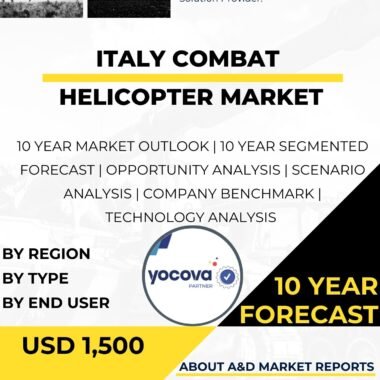Description
Japan Combat Helicopter Market has grown significantly in recent years. This growth is driven by the nation’s focus on strengthening its defense capabilities and addressing security challenges in the Indo-Pacific region. Combat helicopters provide the Japan Self-Defense Forces (JSDF) with versatile capabilities, including close air support, troop transport, aerial reconnaissance, and anti-submarine warfare. They enhance mobility and rapid response in both defensive and offensive operations.
Regional tensions, territorial disputes, and technological advancements by neighboring countries have pushed Japan to modernize its defense forces. Combat helicopters are now a central component of Japan’s strategy, offering rapid deployment options, extended operational reach, and the ability to operate in remote or contested environments.
Applications – Combat Helicopter Market in Japan
Combat helicopters support multiple mission types within the JSDF. The Japan Ground Self-Defense Force (JGSDF) and the Japan Maritime Self-Defense Force (JMSDF) operate helicopters for tactical and strategic missions. They provide real-time intelligence, reconnaissance, and armed support. Helicopters also transport troops and equipment efficiently across complex terrains.
These helicopters play a critical role in disaster response. Japan frequently faces natural disasters such as earthquakes, tsunamis, and typhoons. Combat helicopters enable the rapid delivery of personnel, medical teams, and essential supplies. They also conduct search and rescue missions in areas difficult to reach by land.
Combat helicopters support Japan’s international peacekeeping and stability missions. They help the JSDF rapidly deploy forces and provide aerial support in conflict zones. These operations show the strategic value of helicopters in both defense and humanitarian roles.
Market Drivers – Combat Helicopter Market in Japan
Japan emphasizes domestic development of combat helicopters. Local defense companies research, develop, and produce helicopters tailored to national requirements. This collaboration drives innovation and strengthens the domestic defense industry.
The alliance with the United States further fuels market growth. Japan gains access to advanced helicopter technologies, avionics, and weapon systems. U.S. technologies complement domestic development and ensure interoperability with allied forces.
The evolving sophistication of regional air defenses and unmanned aerial threats also increases demand for advanced helicopters. These platforms offer maneuverability, survivability, and versatility unmatched by fixed-wing aircraft in certain operations.
Challenges – Combat Helicopter Market in Japan
Advanced anti-aircraft systems and electronic warfare capabilities challenge combat helicopter operations. Japan must continuously improve helicopter designs, avionics, and countermeasure technologies.
Interoperability is critical. Helicopters must communicate seamlessly with other JSDF units. Standardizing communication systems and operational procedures requires careful planning.
Cost is another factor. Developing and maintaining advanced helicopters is expensive. Japan must balance investment in rotary-wing aircraft with other defense priorities.
A skilled workforce is essential. Pilots and maintenance crews need extensive training to operate and maintain these sophisticated systems. Workforce development programs are vital to maintain operational readiness.
Conclusion – Combat Helicopter Market in Japan
The combat helicopter market in Japan has grown rapidly due to strategic defense needs. These helicopters provide the JSDF with essential capabilities for combat, reconnaissance, transport, and disaster relief missions. Collaboration between the government, domestic industry, and allied nations drives innovation and ensures access to advanced technologies.
To sustain growth, Japan must address emerging aerial threats, improve interoperability, manage costs, and develop skilled personnel. Advanced combat helicopters will continue to enhance Japan’s defense readiness, mobility, and firepower while contributing to regional and global security.




